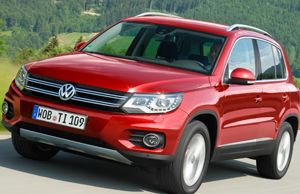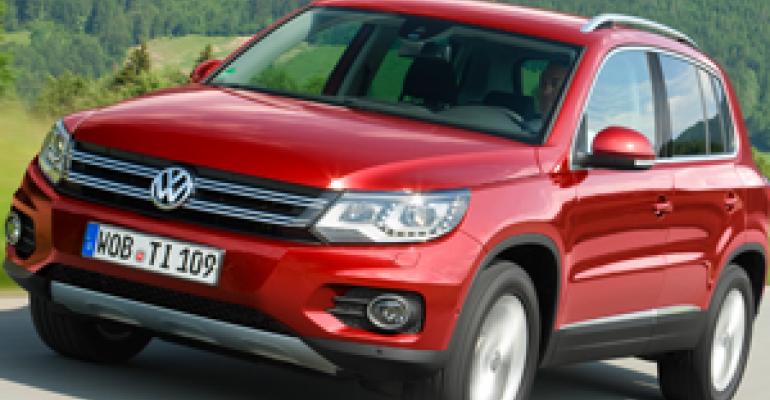
LOS ANGELES – Volkswagen of America is riding high with well-received new products, such as the ’12 Passat, and a 23.8% year-over-year sales surge through October.
“We say internally it’s VW times again; the market is right for VW,” Tim Mahoney, chief product and marketing officer, tells WardsAuto during an interview here.

Despite the optimism, the executive admits there is room for improvement. The Tiguan, for example, offers “a huge opportunity for us, and potentially there are some other segments we could look at,” Mahoney says, noting the small CUV segment is crucially important in the U.S.
Since its introduction in 2008 as an ’09 model, the Tiguan has seen moderate sales success in the U.S. but has failed to reach the volumes of key competitors. The CUV’s sales through October were up 29.9% to 21,737 units, compared with the Toyota RAV4 with 106,800 and Honda CR-V with 180,361, WardsAuto data shows.
Mahoney says a summer marketing campaign helped boost Tiguan deliveries and hints similar initiatives are on the way. “That’s a segment where we can compete more. And it allows us to say we’re not just a car company, but we’re an automotive company.”
One problem is pricing. The Tiguan starts at $23,660, compared with the CR-V at $21,895 and the RAV4 at $22,475. “It’s slightly premium priced, and for some people that’s a barrier,” Mahoney admits.
The marketing chief does not reveal whether VW plans to employ the same price-slashing strategy used to raise Jetta sedan volumes this year. Dropping the ’11 model’s price tag by about $2,000 resulted in a 51.5% increase in deliveries through October.
VW also is keeping a watchful eye on U.S. segments in which it does not participate for signs of growth, he says. The B-segment, although niche, is one that “fits the brand and heritage.”
The auto maker offers its popular Polo B-car in most other global markets. But sales of small cars in the U.S. are more dependent on gasoline prices than some other regions, and being able to sell a small car at a profit is a challenge, Mahoney says.
“I think it’s interesting and appealing,” he says of the Polo, “but with production abroad and the exchange-rate situation, can we offer that vehicle at a compelling and competitive price point that would allow everyone to be successful with it?”
Boosting sales of current models and exploring new vehicle-segment opportunities are part of VW’s quest to become the world’s largest auto maker, a goal it is nearing. Through August, the auto maker sold 5,118,824 vehicles globally, trailing General Motors by 558,019 units, according to WardsAuto data.
Mahoney says VW’s U.S. operations will continue to play a large role in achieving the No.1 status it seeks. However, he is aware of the potential pitfalls.
“I’m conscious of growing too fast,” Mahoney says. “But we’ve outperformed the market significantly the past two years, and there’s no reason to think we can’t keep that going for awhile. We have to keep maturing and growing and finding new ways to stay relevant.”





